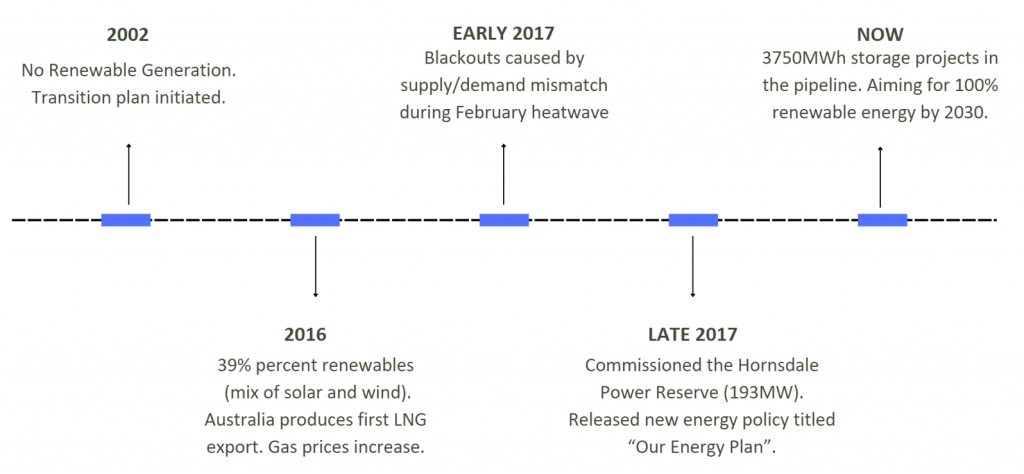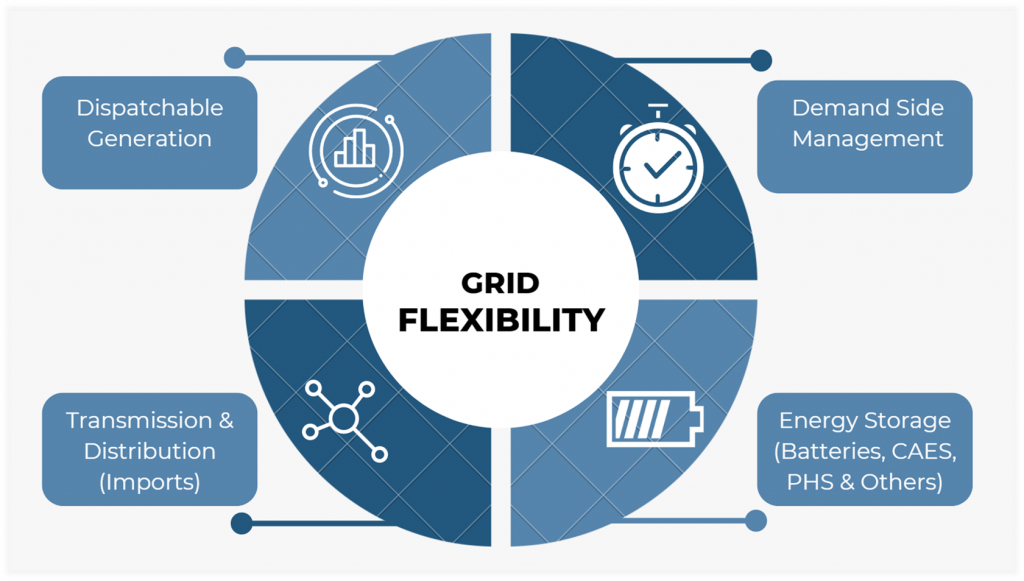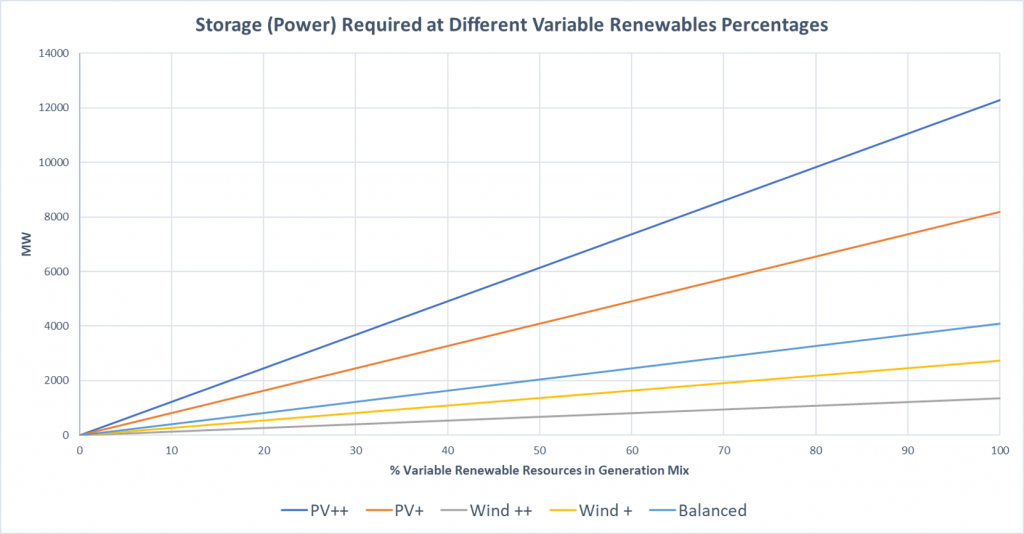Thea Kiley-Kubik, P.Eng | Room C400 | 11:15 – 11:45
Mentor: Robert Stewart, PhD, P.Eng – Charger Ready Properties
Summary
The main goals of this analysis are:
- Estimate the amount of energy storage needed in Alberta by 2030.
- Identify barriers to implementation.
- Quantify the level of policy supports needed.
- Identify policy options capable of promoting adoption.
Recommendations:
- Mandate the grid operator (AESO) and utilities commission (AUC) to develop a storage specific tariff which values energy storage appropriately, compared to its benefits.
- Mandate AESO to identify requirements for cases where renewables supply over 30% of total generation. Publish these scenarios for business case development.
- Implement FEED study subsidies, matching CCS.
- Review programs for direct procurement or government loan guarantees.
Case Study: South Australia

Current State in Alberta
- Renewables have reached 17% of total generation.
- Targeting 30% renewables by 2030. AESO predicts this will then flatline.
- Installed capacity of about 100MW for 4-8hr storage.
- Large amounts of short duration storage in the interconnection queue. Little long duration or seasonal storage.
Other methods of grid flexibility are available; however, this study focuses on energy storage as it can be implemented unilaterally and relatively quickly, compared to increasing import capacity.

Storage Requirements

Valuation Methods
To quantify the level of policy support which would result in widespread adoption of long duration and seasonal energy storge, a model was created based on an existing 88MW windfarm. Then the annual net profit of the storage facility was calculated using AESO’s existing tariff structure where storage alternates between a demand user and a generator, depending on the operating mode.
The results of this model were compared to National Research Council calculations completed in 2017. Their calculations were based on the value provided to the system in terms of:
- Power generation cost reductions.
- Regulation and spinning reserve cost savings.
- Peaking plant capital savings (fewer stop/start cycles)
- Transmission and distribution cost reductions (upgrade deferral)
- Distribution Value. (Chaouki et al, 2017)
The valuations in this report are high level numbers with a wide error margin. Entire market dynamics were not considered which may change the relative difference between the long duration and seasonal case.
Results

Discussion
The biggest barriers to implementation are:
- Tariff structure built for low capital, higher marginal cost thermal power plants. No specific tariff structure for storage.
- Ability to develop “bankable business model” with so many variables and limited FEED funding.
- Current high interest rates discourage capital intensive projects.
Tariff revisions, FEED study subsidies and loan guarantees or direct procurement are suggested to overcome these barriers. Establishing a full capacity market or signing long-term power purchase agreements are unlikely for political reasons. FEED study subsidies will enable companies to take more risks and develop better upfront cost estimates.
References
- Cebulla, Felix, Jaanik Haas, Josh Eichman, Wolfgang Nowak, and Pierluigi Mancarella. 2018. “How much electrical energy storage do we need? A synthesis for the US, Europe and Germany.” Journal of Cleaner Production 449-459.
- Chaouki, Regoui, Ryan Baker, Giovanna Gonzales-Calienes, Steven Shi, Yuri Grinberg, Miyuru Kannangara, Kourosh Malek, et al. 2017. Canadian energy storage report: 2017 case study for the Alberta market. Study, National Research Council Canada.
- McGreevy, Dr. Michael, Colin MacDougall, Dr. Matt Fisher, Mark Henley, and Fran Baum. 2021. “Expediting a renewable energy transition in a privatised market via public policy: The case of south Australia 2004-18,.” Energy Policy.